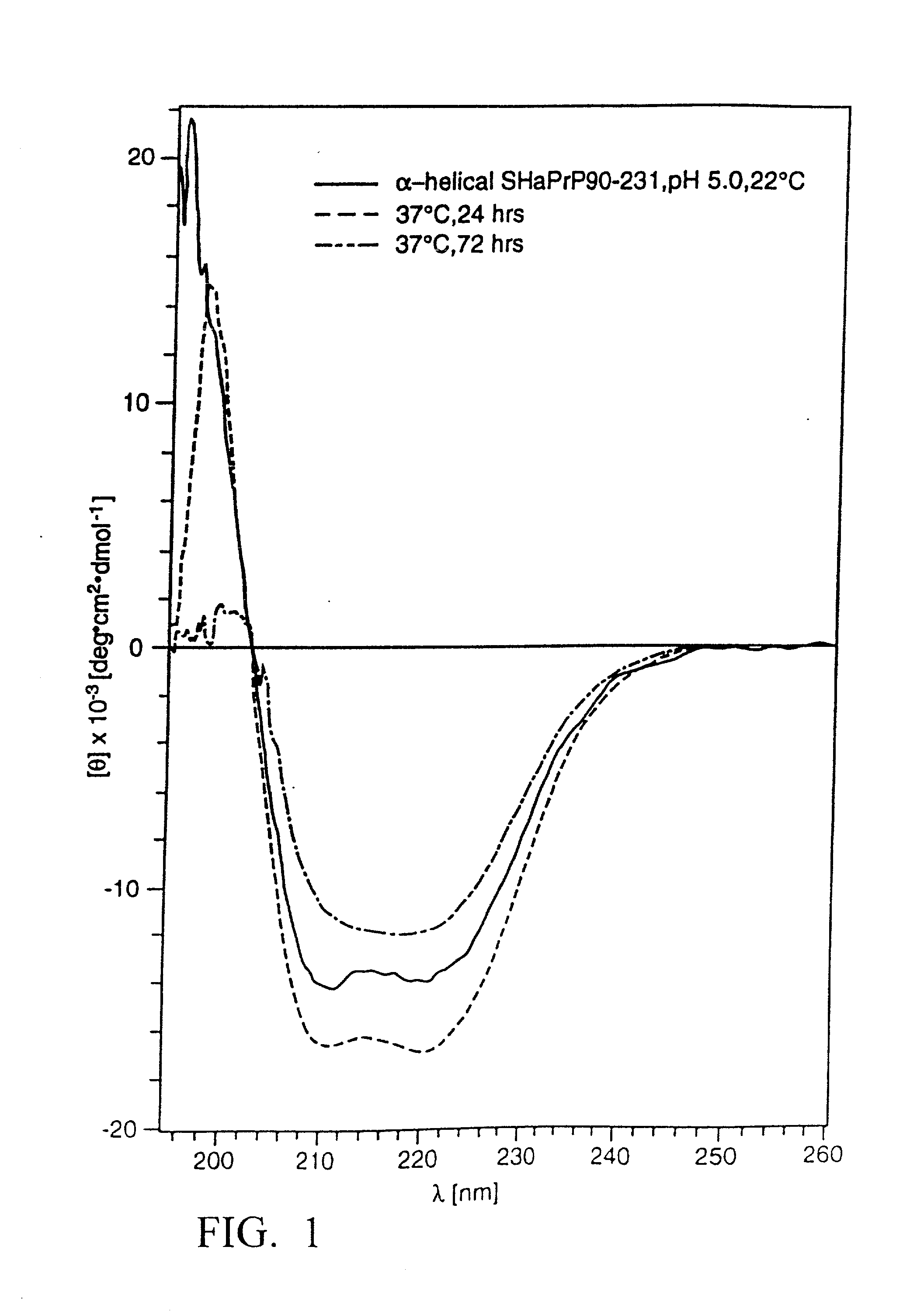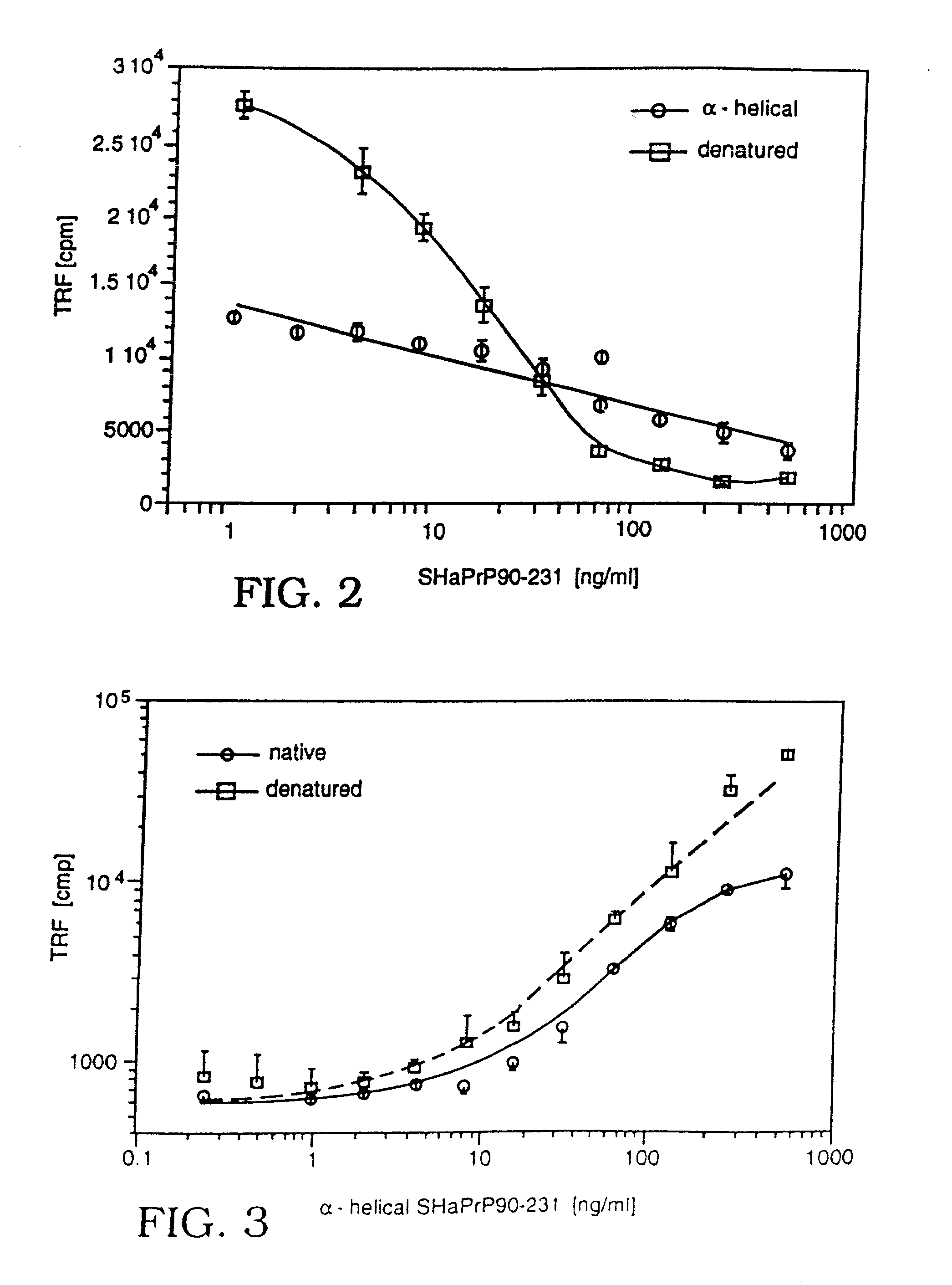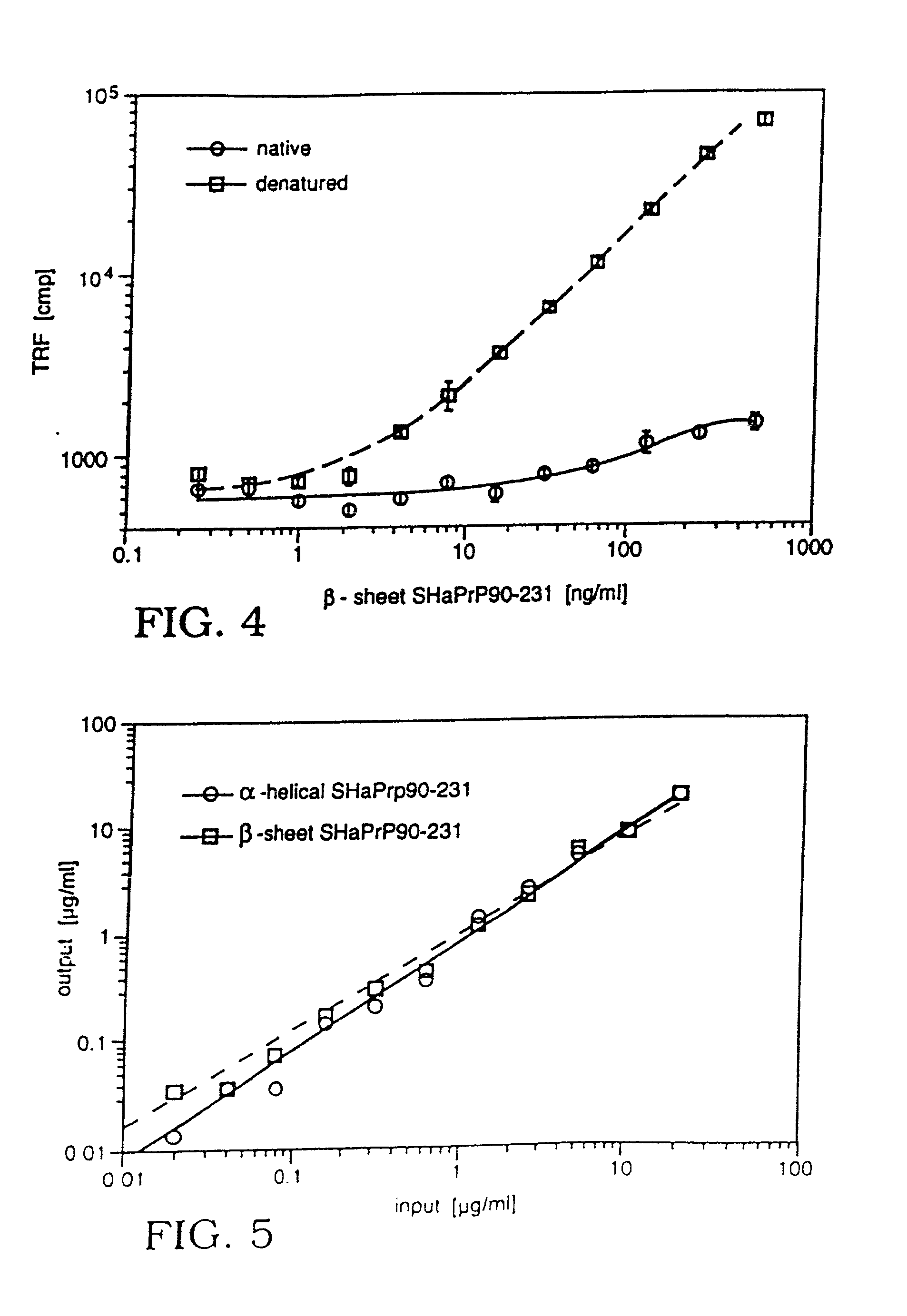Assay for specific strains of multiple disease related conformations of a protein
a technology of conformational protein and protein, which is applied in the field of specific strains of multiple disease related conformations of proteins, can solve the problems of unfavorable diagnostics reliability of both glycosylation and peptide mapping patterns, which is still debated, and achieves enhanced signal, quick and accurate determination of protein presence, and enhanced sensitivity
- Summary
- Abstract
- Description
- Claims
- Application Information
AI Technical Summary
Benefits of technology
Problems solved by technology
Method used
Image
Examples
example 1
EXPRESSION OF RECOMBINANT PRION PROTEINS
[0206] For the development and calibration of the diagnostic assays, recombinant Syrian hamster prion proteins of sequence 90-231 were refolded into .alpha.-helical or .beta.-sheet conformations as described [Mehlhorn, Groth et al. (1996) Biochemistry 35:5528-5537]. PCR (Perkin-Elmer) was used to amplify the DNA corresponding to different portions of the Syrian hamster prion protein in order to ligate it into E. coli secretion vectors. Several 5' oligonucleotide primers were synthesized with an Mlu I restriction site within the C-terminal coding sequence of the STII signal peptide [Lee, Moseley et al. (1983) Infect Immun 42:264-268; Picken, Mazaitis et al. (1983) Infect Immun 42:269-275] and the initial amino acids of the appropriate PrP sequence. One 3' oligonucleotide primer matching the 3' end of PrP, a stop codon and a Bam HI restriction site was used with each of the 5' oligonucleotides. The PCR amplified products were purified, ligated i...
example 2
PURIFICATION OF HAMSTER PrP.sup.C FROM NORMAL AND PrP.sup.Sc FROM SCRAPIE INFECTED HAMSTER BRAINS
[0210] Both proteins produced per Example 1 were used as a standards for the prion assay and to establish the sensitivity and linearity range of the diagnostic method. The purified Syrian hamster brain PrP.sup.C was used for the calibration of prion protein detection and correlated with results obtained on recombinant SHaPrP90-231 in .alpha.-helical, .beta.-sheet, and denatured conformations. The PrP.sup.C protein was purified as described with some minor modifications [Pan, Stahl et al. (1992) Protein Sci 1: 1343-1352; Pan, Baldwin et al. (1993) Proc Natl Acad Sci USA 90:10962-10966]. Protein content was determined by amino acid analysis. The purity of PrP.sup.C protein, as demonstrated on SDS PAGE followed by silver staining and Western, was .gtoreq.95%.
[0211] Standard Syrian hamster PrP.sup.Sc was purified from a standard pool of scrapie strain Sc237 infected hamster brains as describ...
example 3
SELECTION, LABELING AND DETECTION METHOD OF ANTIBODIES USED IN THE ASSAY
[0212] The protocols and methods of antibody production and characterization are in general described elsewhere [Harlow and Lane (1988) supra: 726]. The data described in this and following examples were generated with immunoaffinity purified polyclonal antibody N12 and P3 [Safar, Ceroni et al. (1990) Neurology 40:513-517; Rogers, Serban et al. (1991) J Immunol 147:3568-3574], made against synthetic peptides corresponding sequence 90-145 (N12) and 222-231 (P3) of Syrian Hamster PrP [Barry, Vincent et al. (1988) J Immunol 140:1188-1193]; JS2 against denatured Syrian Hamster PrP 27-30 [Safar, Ceroni et al. (1990) Neurology 40:513-517]. The development and characteristics of monoclonal antibody 3F4 used in the assay are described elsewhere [Kascsak, Rubenstein et al. (1987) J Virol 61:3688-3693] and are described in U.S. Pat. No. 4,806,627, all of which are incorporated by reference to disclose and describe antibod...
PUM
| Property | Measurement | Unit |
|---|---|---|
| temperature | aaaaa | aaaaa |
| time | aaaaa | aaaaa |
| concentration | aaaaa | aaaaa |
Abstract
Description
Claims
Application Information
 Login to View More
Login to View More - R&D
- Intellectual Property
- Life Sciences
- Materials
- Tech Scout
- Unparalleled Data Quality
- Higher Quality Content
- 60% Fewer Hallucinations
Browse by: Latest US Patents, China's latest patents, Technical Efficacy Thesaurus, Application Domain, Technology Topic, Popular Technical Reports.
© 2025 PatSnap. All rights reserved.Legal|Privacy policy|Modern Slavery Act Transparency Statement|Sitemap|About US| Contact US: help@patsnap.com



